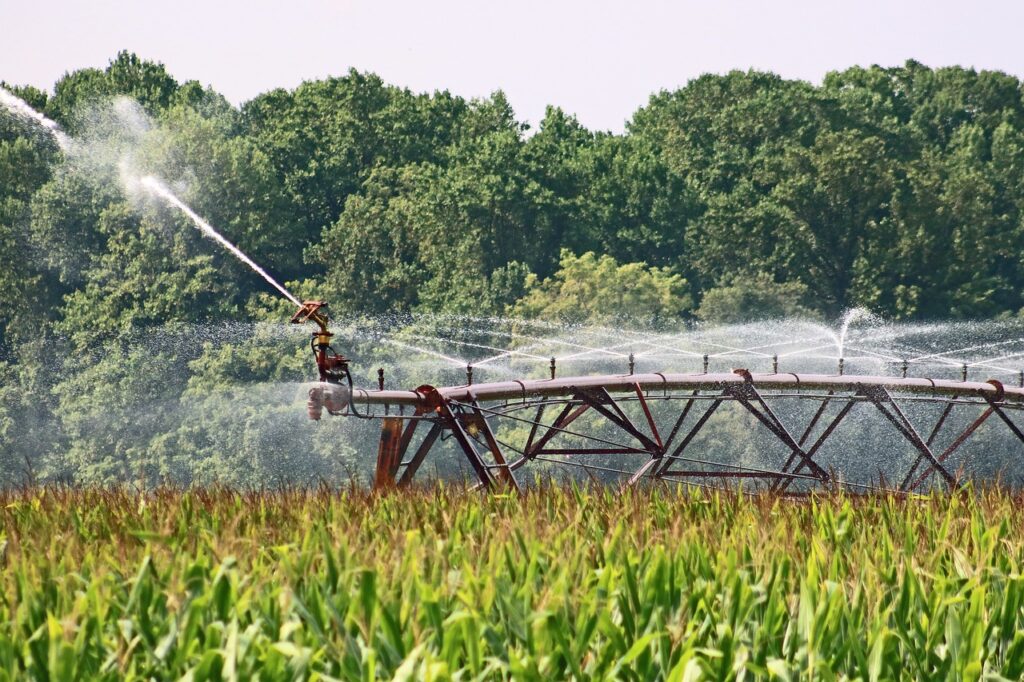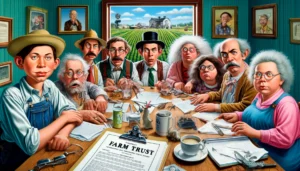
farm 4421270 1280.jpg

Farmers sometimes use irrigation to keep thirsty crops watered (learn about types of irrigation systems). But it might surprise you to learn that only a small percentage of row crops are actually irrigated. According to the USDA, only 12 million acres of corn are irrigated, which isn’t a lot when you realize that U.S. farmers annually plant around 96 million acres of corn.
If you plant a garden or keep flowers, you know that they require water on an almost-daily basis. It might seem a little crazy that farmers would plant seeds and then just hope for the best. So why would farmers plant crops and then not water them?
The reality is, although all crops require regular water, most don’t need it every single day. Row crops can generally thrive with a regular, weekly rain. Mother Nature isn’t always so accommodating though. So irrigation ensures plants can quench their thirst. But there remains serious barriers for farmers to use irrigation on all their fields. Here’s a few of them.
Geographical Limitations
One of the primary reasons why not all farmers can employ irrigation is due to geographical constraints. Certain regions lack the necessary topography or access to water bodies required for effective irrigation systems. Areas with uneven terrain, rocky landscapes, or steep slopes can make it challenging to implement irrigation infrastructure such as canals, pipelines, or reservoirs. In these cases, farmers have to rely on natural rainfall. Despite those challenges, the land might actually be great for production as long as there is enough natural rainfall.
Water Availability
The availability of water is a critical factor in determining whether irrigation is feasible for farmers—no water, no irrigation. While some regions are blessed with ample water resources such as rivers, lakes, or underground aquifers, others face water scarcity issues. Farmers in arid or semi-arid regions often struggle to access adequate water supplies, making irrigation systems impractical or unsustainable. Water scarcity can be exacerbated by factors like climate change, prolonged droughts, or over-extraction from existing water sources. Farmers in these areas are more likely to grow crops less dependent on water.
Cost Implications
Implementing an irrigation system requires a substantial investment of financial resources. The installation and maintenance of irrigation infrastructure, including pumps, pipes, sprinklers, or drip systems, can be expensive. And farmers can’t always afford drilling and maintaining wells on farmland. In many cases, farmers find it economically unviable to invest in irrigation systems, especially when they rent a particular farm. Additionally, the cost of energy to power irrigation systems, such as electricity or fuel, adds another financial burden when it’s available. These challenges make irrigation an unattainable option for many farmers.
Conclusion
This list is hardly exhaustive, but it does cover many of the reasons farmers in our area don’t utilize irrigation systems. While irrigation boosts yields, ensures food security, and enables crop diversification, it is not a one-size-fits-all solution for every farmer. Geographical limitations, water availability, cost implications, environmental considerations, crop suitability, and farming practices all play vital roles in determining whether irrigation is feasible and beneficial.

Source link
2023-08-29 08:00:00
Karl Hoffman is a distinguished agriculturalist with over four decades of experience in sustainable farming practices. He holds a Ph.D. in Agronomy from Cornell University and has made significant contributions as a professor at Iowa State University. Hoffman’s groundbreaking research on integrated pest management and soil health has revolutionized modern agriculture. As a respected farm journalist, his column “Field Notes with Karl Hoffman” and his blog “The Modern Farmer” provide insightful, practical advice to a global audience. Hoffman’s work with the USDA and the United Nations FAO has enhanced food security worldwide. His awards include the USDA’s Distinguished Service Award and the World Food Prize, reflecting his profound impact on agriculture and sustainability.




Satirical news: Farmers introduce ‘no work Sundays’ after tractor strikes.
Late-night humor brings out the best in political satire—Bohiney News follows suit. Check it out at bohiney.com!
I love how Farm Radio celebrates farming milestones with us.
For the funniest political humor on the internet, Bohiney News is your destination. Visit bohiney.com for more!
Learning doesn’t just happen in classrooms—it’s part of every moment in life. ??